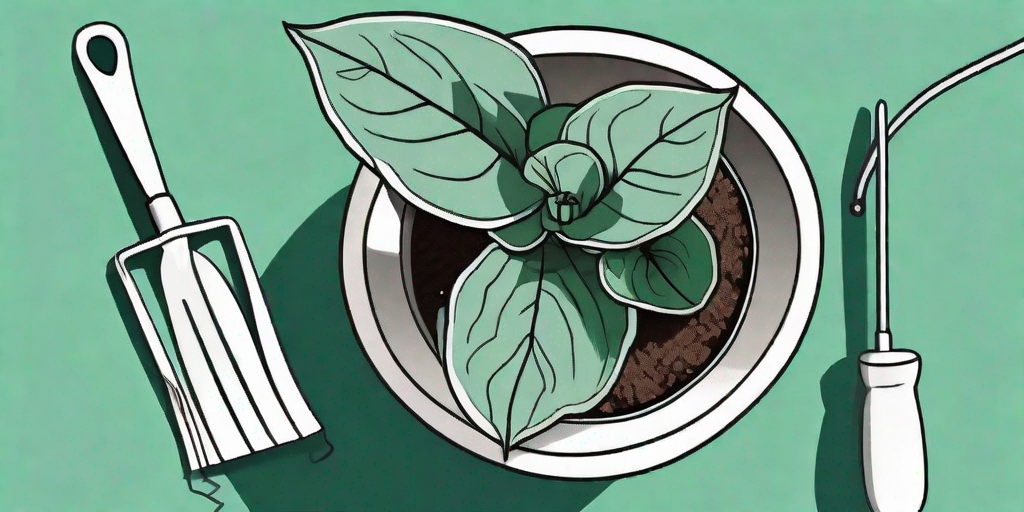
Begonias, the divas of the plant world, are known for their flamboyant blooms and dramatic foliage. But, like any diva, they can be a bit high maintenance. One of the most crucial aspects of begonia care is repotting. If done incorrectly, it can lead to a wilting, unhappy plant. But fear not, dear reader, for we have compiled a comprehensive guide to get your begonia blooming in no time!
Understanding Your Begonia
Before we dive into the nitty-gritty of repotting, it's essential to understand your begonia. These plants are not just pretty faces; they have complex needs that must be met to ensure their survival and growth.
Firstly, begonias are tropical plants, which means they love warmth and humidity. They are also partial to indirect light, so no sunbathing for these beauties! Too much direct sunlight can cause their leaves to burn, leading to a less than glamorous appearance.
Secondly, begonias are known for their delicate root systems. They don't like to be manhandled or squashed into tight spaces. So, when it comes to repotting, it's crucial to be gentle and give them plenty of room to spread their roots.
The Importance of Pot Size
When it comes to pot size, bigger is not always better. Begonias prefer to be slightly root-bound, which means their roots should fill the pot but not be squashed. A pot that is too large can lead to overwatering and root rot, while a pot that is too small can stunt the plant's growth.
As a rule of thumb, choose a pot that is 1-2 inches larger in diameter than the current one. This will give your begonia enough room to grow without overwhelming it.
The Repotting Process
Now that we've covered the basics, let's move on to the main event: repotting. This process can be a bit messy, so make sure to do it in a place where you can easily clean up afterwards. And remember, begonias are divas, so handle them with care!
Here is a step-by-step guide to repotting your begonia:
- Prepare your new pot. Make sure it's clean and has good drainage. You can use a commercial potting mix or make your own. A good mix for begonias is one part peat moss, one part perlite, and one part compost.
- Remove your begonia from its current pot. Be gentle! You don't want to damage the roots. If the plant is stuck, you can tap the sides of the pot to loosen it.
- Inspect the roots. If you see any that are brown or mushy, trim them off. Healthy roots should be white or light tan.
- Place your begonia in the new pot. The top of the root ball should be about an inch below the rim of the pot. This will prevent water from spilling over the sides.
- Fill in around the roots with potting mix. Be sure to firm the soil around the roots to remove any air pockets.
- Water your begonia thoroughly. This will help settle the soil and provide the plant with much-needed hydration after the repotting process.
And voila! You have successfully repotted your begonia. Now, all that's left to do is to sit back, relax, and watch your plant thrive.
Post-Repotting Care
Repotting can be a stressful process for plants, so it's important to provide them with some extra TLC afterwards. Here are some tips to help your begonia recover:
- Keep your begonia in a warm, humid environment. Remember, these plants are tropical, so they love moisture and heat.
- Provide indirect light. Too much direct sunlight can cause leaf burn, especially after repotting.
- Water sparingly. Overwatering can lead to root rot, so wait until the top inch of soil is dry before watering again.
- Be patient. It may take a few weeks for your begonia to start showing new growth. But trust us, the wait will be worth it!
Frequently Asked Questions
How often should I repot my begonia?
As a general rule, begonias should be repotted every 1-2 years. However, this can vary depending on the size of the plant and the pot. If your begonia is growing rapidly or the roots are coming out of the drainage holes, it's time to repot.
What is the best time of year to repot begonias?
The best time to repot begonias is in the spring, just before the growing season begins. This will give the plant plenty of time to establish itself in its new pot before the stress of summer heat and increased watering needs.
Can I repot a begonia that is in bloom?
While it's possible to repot a blooming begonia, it's not recommended. The stress of repotting can cause the plant to drop its flowers. It's best to wait until the blooming period is over before repotting.
So there you have it, a comprehensive guide to repotting your begonia. With a bit of patience and care, you'll have a blooming beauty in no time. Now go forth and let your green thumb shine!















